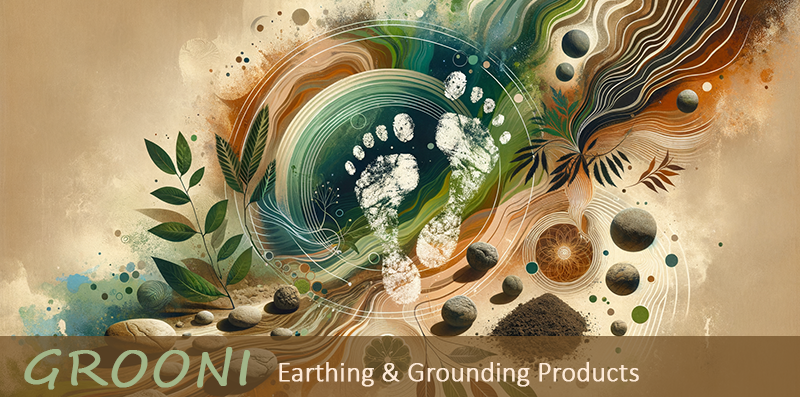
Ever feel completely drained after a day surrounded by screens, traffic, and concrete? That sense of depletion might have something to do with our disconnect from the Earth itself. Grounding, or earthing, is the practice of physically connecting with the Earth’s energy to balance our body’s electrical charge. While it may sound simple, the science behind grounding suggests it might actually pack some serious benefits for both physical and mental wellness.
Contents
What Exactly Is Grounding?
Grounding, or earthing, is the practice of connecting directly with the Earth’s surface. This can be as simple as walking barefoot on grass, sand, or soil, or it can involve using a grounding mat or sheet indoors. The Earth’s surface carries a slight negative charge, and when we touch it, electrons flow from the ground into our bodies, creating a balance that researchers believe can benefit health.
The Body’s Natural Electrical Balance
Our bodies are naturally electrical, with cells and nerves relying on electrical impulses to communicate. However, exposure to artificial electromagnetic fields (EMFs) from phones, computers, and other electronics can disrupt this balance. Grounding allows free electrons from the Earth to enter our bodies, neutralizing positive charges that build up from EMF exposure. This simple act of “recharging” can help stabilize our body’s electrical state, which, according to proponents of grounding, supports overall health.
The Science of Grounding and Its Impact on Wellness
While grounding is a simple practice, research on its effects shows promise for a variety of health benefits. From reducing inflammation to improving sleep quality, grounding has caught the attention of researchers eager to understand how it impacts the body at a scientific level.
Reducing Inflammation and Pain
Inflammation is at the heart of many chronic conditions, from arthritis to cardiovascular disease. Grounding is believed to reduce inflammation by neutralizing free radicals, which are unstable molecules that can cause cellular damage and trigger inflammation. Studies have shown that grounding can lower blood viscosity, which is a key factor in inflammation and cardiovascular risk.
One study published in the Journal of Inflammation Research found that grounding participants experienced reduced pain and stiffness in joints and muscles. For people dealing with chronic pain, grounding may offer a natural, non-invasive way to manage inflammation.
Improving Sleep Quality
A good night’s sleep is essential for healing and well-being, yet many of us struggle to get it. Grounding has been shown to positively affect cortisol levels, the hormone closely linked with stress and sleep patterns. When cortisol levels are balanced, our body can enter deeper, more restorative sleep phases, leading to better sleep quality and increased energy levels.
In one study, participants who used grounding mats reported fewer wake-ups during the night, a more regular sleep-wake cycle, and feeling more refreshed in the morning. For anyone struggling with sleep, grounding might just be the reset button needed to recharge.
Reducing Stress and Anxiety
Stress has a way of draining energy reserves quickly, and grounding may be one way to help manage it naturally. Grounding has a calming effect on the autonomic nervous system, shifting it from the “fight-or-flight” mode to a more relaxed state. When stress is reduced, the body can allocate energy toward healing and recovery, rather than managing constant stress.
This calming effect on the nervous system may be one reason people who practice grounding report feeling more centered, less anxious, and more resilient to life’s challenges. Grounding is not just about physical wellness; it supports mental clarity and emotional balance as well.
Exploring Different Ways to Practice Grounding
Grounding doesn’t require special tools, but there are different techniques for getting grounded depending on your lifestyle and preferences. Here are some of the most effective ways to practice grounding, whether you’re outdoors, indoors, or somewhere in between.
Walking Barefoot Outdoors
The simplest and most natural form of grounding is to walk barefoot on natural surfaces like grass, soil, or sand. This direct contact with the Earth allows electrons to flow freely, creating an instant grounding effect. Even a few minutes of barefoot walking each day can provide noticeable benefits, making it an easy and accessible practice for anyone.
Using Grounding Mats and Sheets
If you’re in a city or spend most of your time indoors, grounding mats and sheets are excellent alternatives. These conductive products connect to the ground port in an electrical outlet, allowing electrons from the Earth to reach you indoors. Many people use grounding sheets on their beds to stay grounded while they sleep, which can improve sleep quality and support recovery overnight.
Gardening with Bare Hands
Gardening is not only therapeutic but also a form of grounding. Working with your hands in the soil allows for direct contact with the Earth, grounding you naturally while engaging in a fulfilling activity. Whether you’re planting flowers, pulling weeds, or simply enjoying time in the garden, gardening offers grounding benefits while connecting you to nature.
Frequently Asked Questions About Grounding and Health
With grounding gaining popularity, it’s normal to have questions about how it works and what to expect. Here are some of the most common questions people have about grounding.
Is Grounding Safe?
Grounding is generally safe for most people, but if you have a medical device, like a pacemaker, it’s wise to consult with your doctor before using grounding products that connect to an electrical outlet. For most people, however, grounding through natural contact with the Earth is entirely safe and accessible.
How Long Should I Practice Grounding?
Even a few minutes of grounding each day can be beneficial. Many people find that 15-20 minutes per day provides noticeable improvements, especially for sleep and stress levels. However, there’s no downside to longer grounding sessions, so feel free to spend as much time grounded as you’d like.
Can Grounding Help with Specific Health Conditions?
While grounding is not a cure, it may provide relief for certain conditions, especially those linked to inflammation, stress, and sleep disorders. Many people with arthritis, chronic pain, and insomnia report feeling better with regular grounding. However, grounding should be seen as a complementary practice to support wellness, not a replacement for medical treatment.
Who Can Benefit Most from Grounding?
Grounding offers broad wellness benefits that can be helpful for almost anyone, but certain groups may find it especially beneficial. Here’s who might experience the most noticeable improvements from grounding.
- People with Chronic Pain or Inflammatory Conditions: Grounding may provide relief for those with arthritis, fibromyalgia, or other inflammation-related conditions by reducing oxidative stress and promoting circulation.
- Individuals with High Stress Levels: If you often feel stressed or anxious, grounding can help calm the nervous system, making it easier to relax and recover.
- Those Struggling with Sleep Disorders: Grounding’s effect on cortisol can promote better sleep patterns, helping you wake up feeling rested and refreshed.
How to Get Started with Grounding for Wellness
Grounding is easy to incorporate into your wellness routine. Here are a few simple steps to start grounding and experience its potential benefits for yourself.
Set a Daily Grounding Routine
Consistency is key. Aim to spend at least a few minutes grounded each day, whether it’s walking barefoot outside, sitting in the grass, or using a grounding mat. Many people find that morning or evening grounding works best, but choose a time that feels right for you.
Combine Grounding with Relaxation Practices
Grounding pairs well with other wellness practices like meditation, deep breathing, or gentle stretching. Use your grounding time to center yourself, practice mindfulness, or simply enjoy a moment of peace. The combined effect can enhance relaxation and support both mental and physical well-being.
Listen to Your Body
Grounding is a personal practice, and its effects can vary from person to person. Pay attention to how you feel before and after grounding. If you notice an improvement in mood, energy, or sleep quality, consider increasing your grounding time or incorporating it into more parts of your day.

